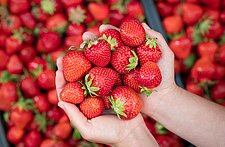Cuisine is an integral and defining aspect of any culture. Not only do the ingredients and dishes create flavors associated with certain geographic regions, but food creates memories that stay with us. Eating is functional but also social. It brings together families, friends, and communities and contributes to a shared sense of self.
Of course, humans are nothing if not adventurous when it comes to food, so it’s no surprise that fusion cooking results when different cultures cross paths. The question is, can it go too far?
What is the line between creating a fusion experience that blends the best of two types of cuisine and veering into a level of dilution where the culinary contributions of different cultures are all but lost?
Chaos cuisine takes an extreme approach to fusion that seeks to innovate, but does it lose something in translation? What is chaos cuisine, and are the effects of this experimental craft promoting or diminishing cultural dishes?
What Is Chaos Cuisine?
To call chaos cuisine experimental is a bit of an understatement. This take on fusion cooking might be described as extreme, aggressive, and downright bizarre. However, it can also be incredibly innovative, thoughtful, and delicious.
This subversive culinary style borrows from a range of world cuisines, taking flavors and ingredients the original cuisines would never pair and turning them into mouth-watering masterpieces. While experiments can certainly go wrong, chaos cuisine can also be surprisingly tasty.
It’s not just about combining flavors in new and unexpected ways. Chaos cuisine also strives to temper novelty by incorporating feelings of nostalgia that are tied to familiar foods and the cultures they come from. It’s a fine line to walk between recognition and originality, but when done right, dishes are both accessible and delightfully fresh.
Subscribe to In-sight to receive articles and reports directly to your inbox, CLICK HERE!
Chaos Cuisine in America
When you hear about food like cheeseburger dumplings, chorizo popcorn, or tandoori spaghetti, your first reaction might be understandably dubious. These are just a few items in the chaos cuisine category that have started popping up to some acclaim.
Chaos cuisine could spring from a desire to represent myriad influences, such as more than one cultural heritage, paired with a unique and personal perspective.
Avish Naran, the brain behind Pijja Palace in Los Angeles, is a great example of this principle at work. A long-time fan of sports bars, he decided to put his own spin on this restaurant category with a fusion of Indian and Italian that drew on his heritage and favorite food experiences.
The result is a bright, breezy, café-like atmosphere and a menu featuring items like Dosa Onion Rings, Yellow Wings (with spicy mustard, honey, turmeric, and horseradish), Lamb Kebab sliders, and Tandoori Spaghetti.
Related: Misconceptions Concerning Latin American Cuisine
Expanding the Market for International Food in the U.S.
Fusion is nothing new, but options like sushi burritos, for example, still tend to lean heavily toward one cuisine over the other. This particular example borrows the rolled wrap of a Mexican burrito but sticks to typical sushi ingredients rather than fusing Japanese and Mexican flavors.
Chaos cuisine is something different. It seeks to break the rules, and this comes with risks. Not only could the food fail to find an audience, but worse, it could offend the very cultures it draws on.
Creating something new in the food world requires a thoughtful approach that retains enough familiarity to draw an audience but branches out enough to create novelty and excitement.
It’s a fine line, but restaurateurs looking to buck trends and create a totally unique fusion cuisine stand to garner plenty of attention and a devoted following in the process.
To learn more about our products and insights, get in touch with our team at Symrise today, Contact us here!






